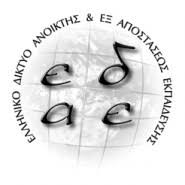Η αξιοποίηση διδακτικών σεναρίων αναγνωρίζεται ως καινοτόμα παιδαγωγική πρακτική στην εκπαιδευτική διαδικασία καθώς συνδέεται με την προώθηση μαθητοκεντρικών εκπαιδευτικών προσεγγίσεων υπό το πρίσμα των αρχών της εποικοδομητικής μάθησης. Η ένταξη των ΤΠΕ στο πλαίσιο παιδαγωγικά τεκμηριωμένων διδακτικών και μαθησιακών δραστηριοτήτων προσφέρει ευκαιρίες ενεργούς εμπλοκής των μαθητών σε διαδικασίες διερευνητικής και συνεργατικής μάθησης και υποστηρίζει διεργασίες που οδηγούν στην εννοιολογική κατανόηση κατά τη διδασκαλία των Φυσικών Επιστημών. Στην παρούσα εργασία περιγράφεται ένα διδακτικό σενάριο το οποίο αξιοποιεί το λογισμικό δισδιάστατης διαδραστικής σχεδίασης Algodoo για την υποστήριξη της διδασκαλίας της ενότητας «Φως» του μαθήματος «Ερευνώ τον Φυσικό Κόσμο» της Στ’ Τάξης του Δημοτικού Σχολείου. Στο πλαίσιο του προτεινόμενου διδακτικού σεναρίου το λογισμικό δισδιάστατης διαδραστικής σχεδίασης Alogdoo εντάσσεται σε δραστηριότητες καθοδηγούμενης διερεύνησης οι οποίες αποσκοπούν στο να προσφέρουν στους μαθητές δυναμικές οπτικές αναπαραστάσεις που προσελκύουν το ενδιαφέρον τους και τους επιτρέπουν να κάνουν προβλέψεις, υποθέσεις και ερμηνείες για το φαινόμενο της διάθλασης του φωτός.
(EL)
Current research has explored new forms of teaching and learning to guide teachers in productive pedagogical innovation. Among these pedagogical innovations, using teaching scenarios in learning has become widely adopted in scholarly science education. One argument in favor of scenario-based teaching is that it promotes student-centered learning activities and motivates students to construct their own understanding of scientific ideas. Ultimately, these pedagogies foster different types of teaching activities which encourage students to conduct a self-directed, interestguided and meaningful learning. The teachers’ important roles in these sophisticated pedagogical capacities are directed towards facilitating, motivating, supporting, and supervising their students in order to become actively engaged with the content and able to learn from that engagement. Research on the use of a diversity of ICT tools in education shows that these technologies have an important role to play in re-defining teaching frameworks in science education. Advanced computer software and interactive applications like Interactive Physics, Modellus, Phed and Algodoo provide learning opportunities that address many of the goals and challenges associated with pedagogical approaches to science education, such as inquiry-based learning, self-guided exploration and problem-solving. Technology-based teaching environment offers interactive computer simulations that enable students to work collaboratively on various science topics. It also provides opportunities to students for problem-solving, debating on controversial issues and making links between new knowledge which is gained through using ICT and prior learning. This paper proposes a framework for designing a teaching scenario that incorporates ICT as a guide for improving conceptual understanding, higher-order thinking skills and collaborative learning in scholarly science education. Based on principles of the scientific didactic model which has been incorporated in the official handbooks, this teaching scenario attempts to seek innovative student-centered approaches with the use of ICT regarding of the concept of light refraction in Greek primary school (10– 12 years old students). The 2D-simulation software Algodoo and an interactive smart board are used to encourage teachers and students to create simulated “scenes” and explore the phenomenon of lights’ refraction. In fact, this software provides a userfriendly and visually attractive interface where students are able to change the initial conditions and observe what happens to the physical properties contained in the animation. For example, Algodoo’s optics scenes give the chance to students to study how light waves behave when they move from one physical material to another. Based on the assumption that educational scenarios that incorporate ICT have enormous potential to provide opportunities for re-shaping the pedagogy in scholarly science education, this paper describes an operational concept for effective teaching using Algodoo. Drawing on constructivism views of learning, this educational scenario describes a set of teaching activities that integrate computer 2-D simulations in order to help students to revise their alternatives micro-conceptions, to identify questions, to test hypotheses, to make observations, to interpret evidence and to communicate their findings concerning the concept of light refraction. Further investigation and even practical experience are necessary to recognize how to design pedagogical activities that incorporate Algodoo’s dynamic simulations in scholarly science education.
(EN)

